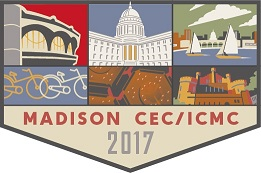Speaker
Description
Due to its low viscosity, cryogenic He II has potential use for simulating large-scale, high Reynolds number turbulent flow in a compact and efficient apparatus. To realize this potential, the behavior of the fluid in the simplest cases, such as turbulence generated by flow past a mesh grid, must be well understood. We have designed, constructed, and commissioned an apparatus to visualize the evolution of turbulence in the wake of a mesh grid towed through He II. Visualization is accomplished using the particle tracking velocimetry (PTV) technique, where µm-sized tracer particles are introduced to the flow, illuminated with a planar laser sheet, and recorded by a scientific imaging camera; the particles move with the fluid, and tracking their motion with a computer algorithm results in a complete map of the turbulent velocity field in the imaging region. In our experiment, this region is inside a carefully designed He II filled cast acrylic channel measuring approximately 16 x 16 x 330 mm. One of three different grids, which have mesh numbers M = 3, 3.75, or 5 mm, can be attached to the pulling system which moves it through the channel with constant velocity up to 500 mm/s. The consequent motion of the solidified deuterium tracer particles is used to investigate the energy statistics, effective kinematic viscosity, and quantized vortex dynamics in turbulent He II.




